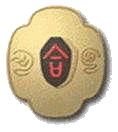Aikido is a Japanese martial art developed by Master
Morihei Ueshiba, 1883-1969. He was
often called O’Sensei (Great Teacher) and had been exposed to martial arts
since childhood. He became a
renowned martial artist but he was not fully satisfied with himself or the
traditional martial arts. He
questioned the values of aggression, physical strength, and “victory” over
others. He continued his search for
the true and undefeatable martial art that unified body, mind, and spirit in
accordance with the principles of nature. Through
meditation, self-purification, and study, Master Ueshiba concentrated on
understanding the spiritual world. The
profound realizations that came to him gave birth to the original concept of
Aikido.
On
a purely physical level Aikido is an art involving throwing, immobilizing, and
twisting joints that are derived from Ju-jitsu and
Ken-jitsu. Aikido does not focus on punching or kicking opponents, but
rather on using your opponent’s own energy to gain control of them or to throw
them away from you. It is not a
static art, but places great emphasis on motion and the dynamics of movement.
Aikido
has no tournaments, competitions, contests, or sparring.
Instead, according to the founder, the goal of Aikido is
not the defeat of others, but the defeat of the negative characteristics which
inhabit one's own mind and inhibit its functioning.
At the same time, the potential of Aikido as a means of self-defense
should not be ignored. One reason
for the prohibition of competition in Aikido is that many Aikido techniques
would have to be excluded because of their potential to cause serious injury.
By training cooperatively, even potentially lethal techniques can be
practiced without substantial risk.
Another benefit of
training in Aikido is the development of self-confidence.
Since the essence of Aikido is derived from swordsmanship and not from
bodybuilding, the smaller, more agile and responsive person has a greater
advantage over a larger and slower adversary.
Aikido Movements and
Training
Training is based on tai-sabaki (refined body movements), which develops
your balance, agility, and elasticity. Learning
traditional weapons, including the bokken and jo, teaches you distance, timing,
speed, and one very important quality, perhaps the most important, communication
skills through awareness.
Aikido
trains you to be strong yet gentle, relaxed and yet deeply alert and intuitive.
Aikido creates no opponents, but unifies without resistance. Force is neutralized in a non-conflicting direction.
You practice to match your movements with others by avoiding collision
and conflict as well as to redirect the energy of others.
In Aikido practice the student learns to be solidly
grounded yet mobile. This is done
by keeping the center of gravity very low through relaxing of the upper body,
keeping the back straight, and breathing naturally from the center or the lower
abdomen called “Hara”. The
power generated is called kokyu-ryoku (breath power).
O’Sensei called this extension the "circle of steel".
Kokyu-ryoku means your extension of both your breath and your ki
(internal energy). It is learning
to coordinate breath with movement and it can also be thought of as your sphere.
When you understand when to breathe in, and when to breathe out, Aikido
becomes a moving meditation. Unlike
muscle strength, Kokyu-ryoku does not deteriorate with age, however it increases
as you train further in Aikido.
You
learn Aikido techniques cooperatively at a pace commensurate
with your abilities.
Everyone aims at the mastery of Aikido principles and techniques through
continuous practice. It must be
emphasized that there are no shortcuts to proficiency in Aikido or in anything
else for that matter. Consequently,
attaining proficiency in Aikido is simply a matter of sustained and dedicated
training. No one becomes an expert
in just a few months or years.
Upon
closer examination, you will find what you seek from Aikido, whether you find it
applicable in self-defense technique, spiritual enlightenment, physical health,
or peace of mind. O’Sensei
emphasized the moral and spiritual aspects of this art, placing great value on
the development of harmony and peace. "The
Way of Harmony of the Spirit" is one way that "Aikido" may be
translated into English. Although the idea of a martial discipline striving for peace
and harmony may seem paradoxical, it is the most basic tenet of the art.
Samurai Tradition
The Samurai
warriors were the royal bodyguards and army to the Shogunate (government).
They were highly trained and skilled swordsmen.
Being a swordsman not only entailed knowledge of the sword, but of many
martial arts. One of these was
Kyudo (archery), which was practiced from horseback.
Actually archery was the original art of the Samurai, and the sword came
later. The Samurai needed to know
yari (lance), Ken-jitsu (sword technique), tai-jitsu (body technique such as
pins and throws), calligraphy, music, and yes, even ikebana (flower
arrangement). One was not
considered cultured until mastering many of these and other disciplines.
Our Aikido training is authentic and true to the
Samurai tradition. It is not to be
confused with other styles of martial arts that offer training as a sport or
recreation. That is not to say that
Aikido cannot be fun. On the
contrary, learning something that helps you to grow and succeed can provide
great enjoyment. You will learn the
disciplines of the Samurai Warriors of ancient Japan.
You will be introduced to body techniques with a heritage of a thousand
years. You will be challenged in
mind, body, and spirit. Through
this program, you will grow and develop new and dynamic technical qualities. With continued practice you will discover qualities within
yourself, which will bring harmony and reduce the stresses of daily life.

